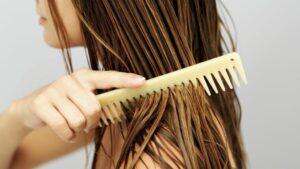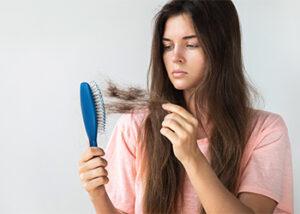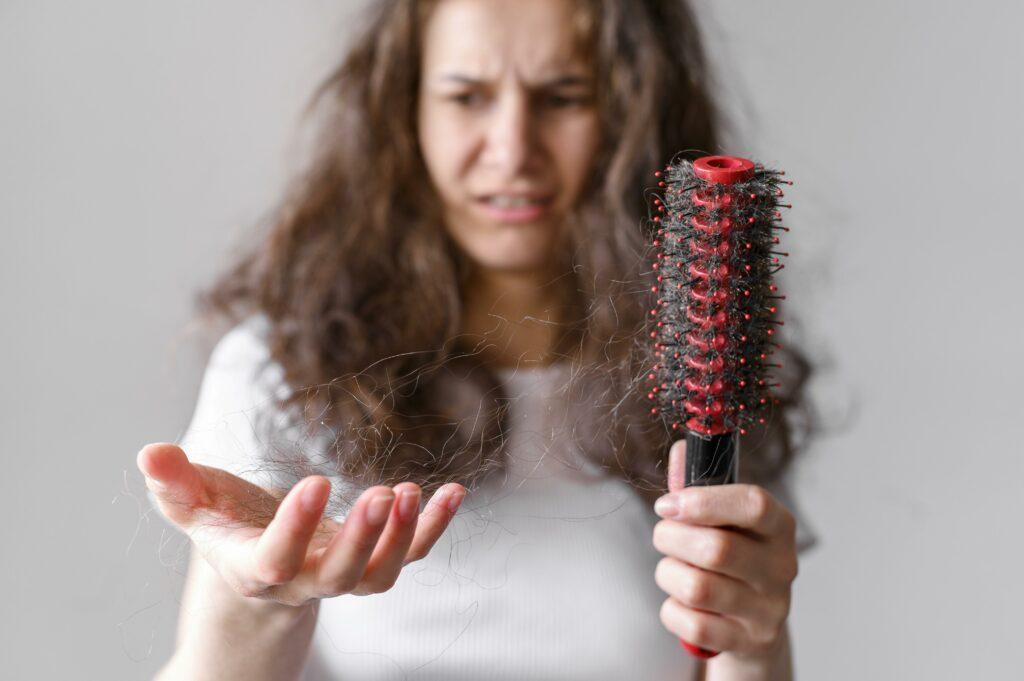Blog
Hair Tangling and Shedding
Understanding Hair Tangling and Shedding: Causes and Prevention
Hair is a defining feature of our appearance, and its health and appearance greatly affect our self-esteem and overall well-being. Two common hair-related concerns that many individuals face are tangling and shedding. In this comprehensive guide, we will explore the reasons behind hair tangling, factors contributing to shedding, and effective prevention and management strategies.
Hair Tangling: Why Does it Happen?

Reason 1: Dryness
One of the primary causes of hair tangling is dryness. Dry hair lacks moisture, making it more susceptible to friction and tangling. This can be caused by various factors, including excessive exposure to the sun, harsh weather conditions, and frequent use of heat styling tools.
Reason 2: Lack of Proper Care
Proper hair care is crucial to preventing tangling. Not brushing or combing your hair regularly can allow tangles to form, especially in long or curly hair. Tangles can be difficult to remove and can cause damage to your hair. Regular brushing and combing can help to keep your hair healthy and free from tangles. Additionally, not using the right hair care products or using them incorrectly can lead to tangling.
Reason 3: Damaged hair.
Damaged hair is more prone to tangling. Split ends, frizz, and rough textures can make the hair strands catch on each other, leading to knots and tangles. Damage can result from excessive heat styling, chemical treatments, or a lack of protection.
Reason 4: Hair Texture
Hair texture also plays a significant role in tangling. Coarse or curly hair tends to tangle more easily than straight hair due to the natural structure of the hair strands. Curly hair has twists and turns that can interlock, leading to tangling.
Tangles After Brushing: What’s Going On?
It can be frustrating to experience tangling immediately after brushing your hair. Following reasons explained this issue:

Reason 1: Brushing Technique
Brushing technique matters. If you’re not using the right type of brush or are brushing your hair too aggressively, you can create more tangles instead of detangling the hair.
Reason 2: Wrong Brush Type
The type of brush used can make a difference. For example, a wide-tooth comb or a brush specifically designed for detangling can help minimize tangling.
Does Tangled Hair Cause Hair Loss?

Tangled hair can lead to hair breakage, but it may not directly cause hair loss. Hair loss is often related to factors beyond tangling, such as genetics, hormonal imbalances, and medical conditions. However, it’s essential to address tangling as excessive tangling can weaken the hair and make it more prone to breakage.
Hair Shedding: A Natural Process
Shedding hair is a natural part in the hair growth cycle. On average, individuals shed between 50 and 100 hairs per day. This shedding is normal and does not signify hair loss. Hair shedding can also occur due to physical or emotional stress, hormonal changes, certain medications, or medical conditions. Shedding is the result of older hair reaching the end of its life cycle and making way for new hair growth. It’s important to understand that not all hair shedding is a cause for concern.
Why Does Hair Shed?
Several factors can influence the rate of hair shedding:
Reason 1: Age
Due to your elder age, the rate of hair shedding tends to increase, as a natural part of the aging process. With age, the hair also tends to become thinner and weaker, and the scalp may become more sensitive to certain products. Additionally, hair may become dry and brittle, making it more prone to breakage.
Reason 2: Hormonal Changes
Hormonal changes, such as those experienced during pregnancy, postpartum, or menopause, can influence the hair growth cycle and result in temporary shedding. Temporary shedding is normal and most women experience it at some point in their life. However, if hair shedding persists, it is important to seek medical advice.
Reason 3: Stress
High levels of stress can trigger a condition called telogen effluvium, where more hair than usual enters the shedding phase of the hair growth cycle. This can cause hair to become thinner and fall out in clumps. Stress can also cause the scalp to become itchy, red, and inflamed. It is important to manage stress levels in order to avoid this condition.
Reason 4: Medical Conditions
Certain medical conditions, such as thyroid disorders and autoimmune diseases, can lead to increased hair shedding. Treatment for these conditions can help to reduce hair shedding. Additionally, maintaining a healthy diet and stress levels can also help to reduce the amount of hair a person sheds.
Reason 5: Nutritional Deficiencies
Inadequate nutrition, especially deficiencies in essential vitamins and minerals, can impact hair health and contribute to shedding. This can lead to dry and brittle hair, or even hair loss. Eating a balanced diet that includes a variety of vitamins and minerals can help to prevent nutritional deficiencies and improve hair health.
Common Questions About Hair Tangling and Shedding
“Stop Hair Shedding Immediately”
While it’s not always possible to stop hair shedding completely, there are steps you can take to reduce excessive shedding:
- Balanced Diet: Ensure you’re getting the necessary vitamins and minerals, particularly biotin, zinc, and iron, which are essential for healthy hair.
- Stress Management: Practice stress-reduction techniques such as meditation, yoga, or exercise.
- Gentle Hair Care: Treat your hair with care. You should avoid tight hair styles and avoid using too hot processes and chemical usage.
- Consult a Healthcare Professional: If you believe your shedding is excessive, consult a dermatologist to rule out underlying medical conditions.
“Why Is My Hair Shedding More Than Usual?”
If you notice an increase in hair shedding, it’s essential to identify the underlying cause:
- Stress Assessment: Reflect on recent stressors in your life and consider implementing stress management techniques.
- Hormonal Changes: If you’ve recently experienced hormonal changes (such as pregnancy or menopause), consult a healthcare provider.
- Nutrition Check: Evaluate your diet and consider whether nutritional deficiencies might be a factor.
- Health Evaluation: If you suspect a medical condition, consult a healthcare professional to assess and address the issue.
Prevention and Management Strategies
Now that we’ve explored the reasons behind hair tangling and shedding, let’s discuss effective prevention and management strategies:
Hair Tangling Prevention:
- Hydration: Keep your hair well-hydrated by using a good quality conditioner and hair mask. Drink enough water to maintain well-being hair.
- Proper Hair Care: Brush or comb your hair regularly using the right tools. Use a wide-tooth comb for detangling, and avoid aggressive brushing.
- Protective Hairstyles: If you have long hair, consider protective hairstyles like braids or buns to minimize friction and tangling.
- Hair Products: Use hair products specifically designed to prevent tangling and promote smoothness.
Hair Shedding Prevention:
- Healthy Diet: Consume a balanced diet rich in vitamins and minerals that support hair health. Consider taking supplements if needed.
- Stress Management: Practice stress-reduction techniques to minimize the risk of stress-induced hair shedding.
- Gentle Hair Care: Treat your hair with care. You should avoid using too hot processes and chemical usage and tight hairstyles.
- Medical Evaluation: If shedding is excessive or sudden, consult a healthcare professional to rule out underlying health conditions.
Conclusion
Understanding the reasons behind hair tangling and shedding is the first step towards effective prevention and management. Dryness, lack of proper care, damaged hair, and hair texture can all contribute to tangling. Additionally, brushing technique and the type of brush used play a role in tangling after brushing. While tangled hair can lead to breakage, it’s not a direct cause of hair loss. Shedding, on the other hand, is a natural part of the hair growth cycle influenced by factors such as age, hormones, stress, medical conditions, and nutrition.
To maintain healthy hair and minimize these issues, it’s essential to follow a good hair care routine, eat a balanced diet, manage stress, and seek medical advice when necessary. By taking proactive steps and understanding the complexities of hair health, you can enjoy the confidence that comes with having beautiful, manageable, and healthy hair.
See more: Here
See more: Here

